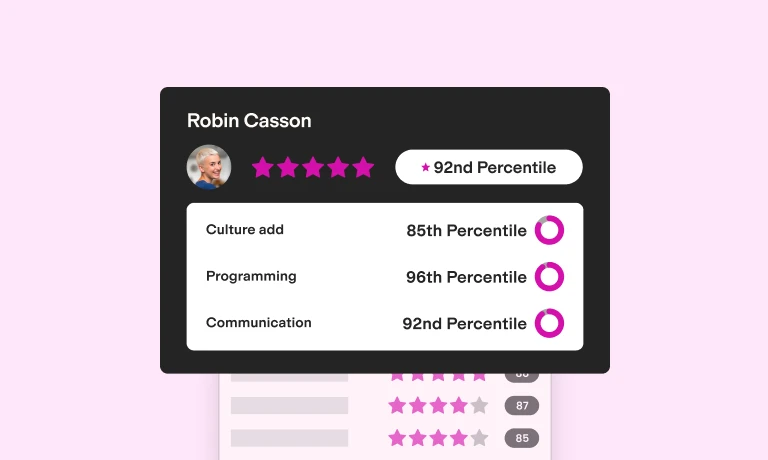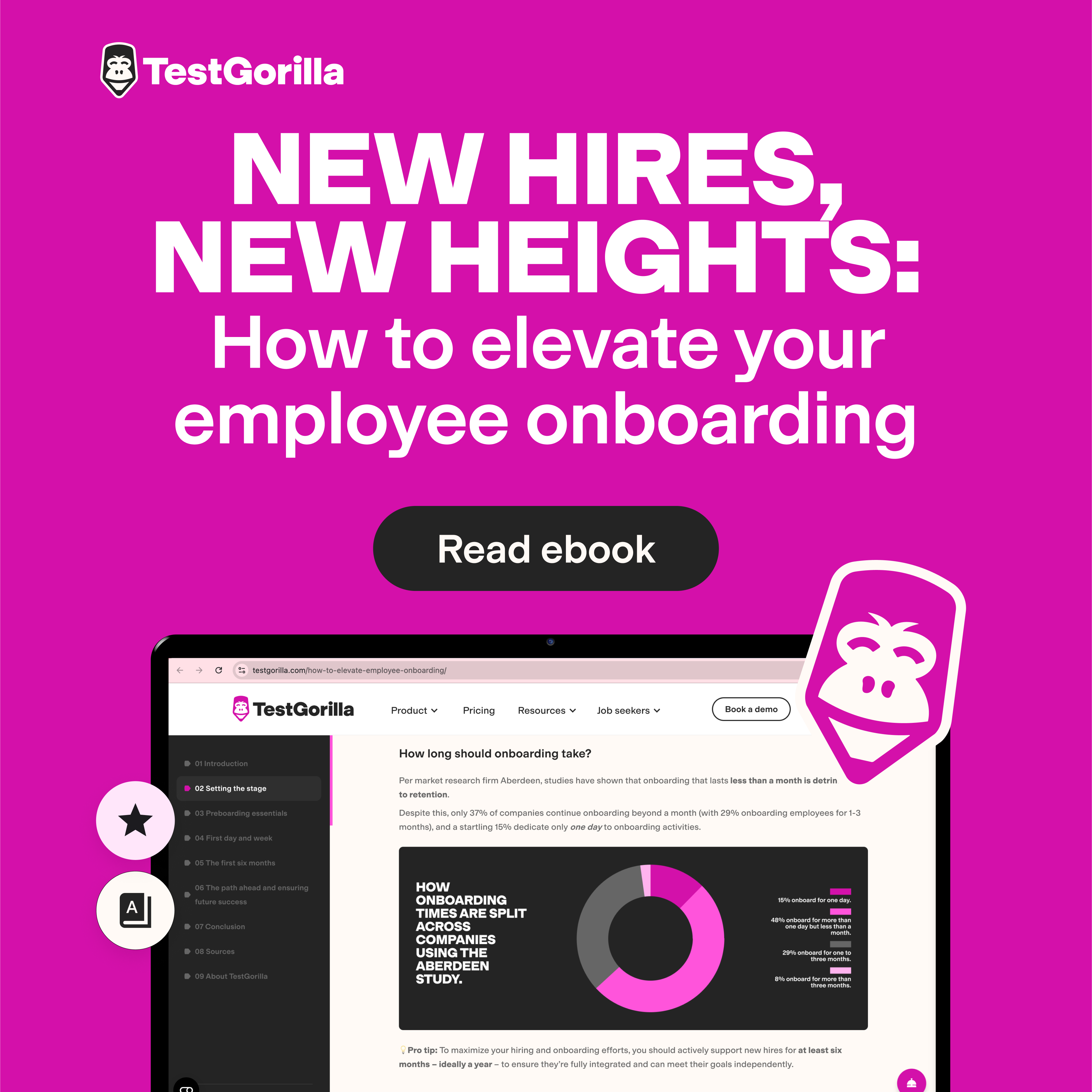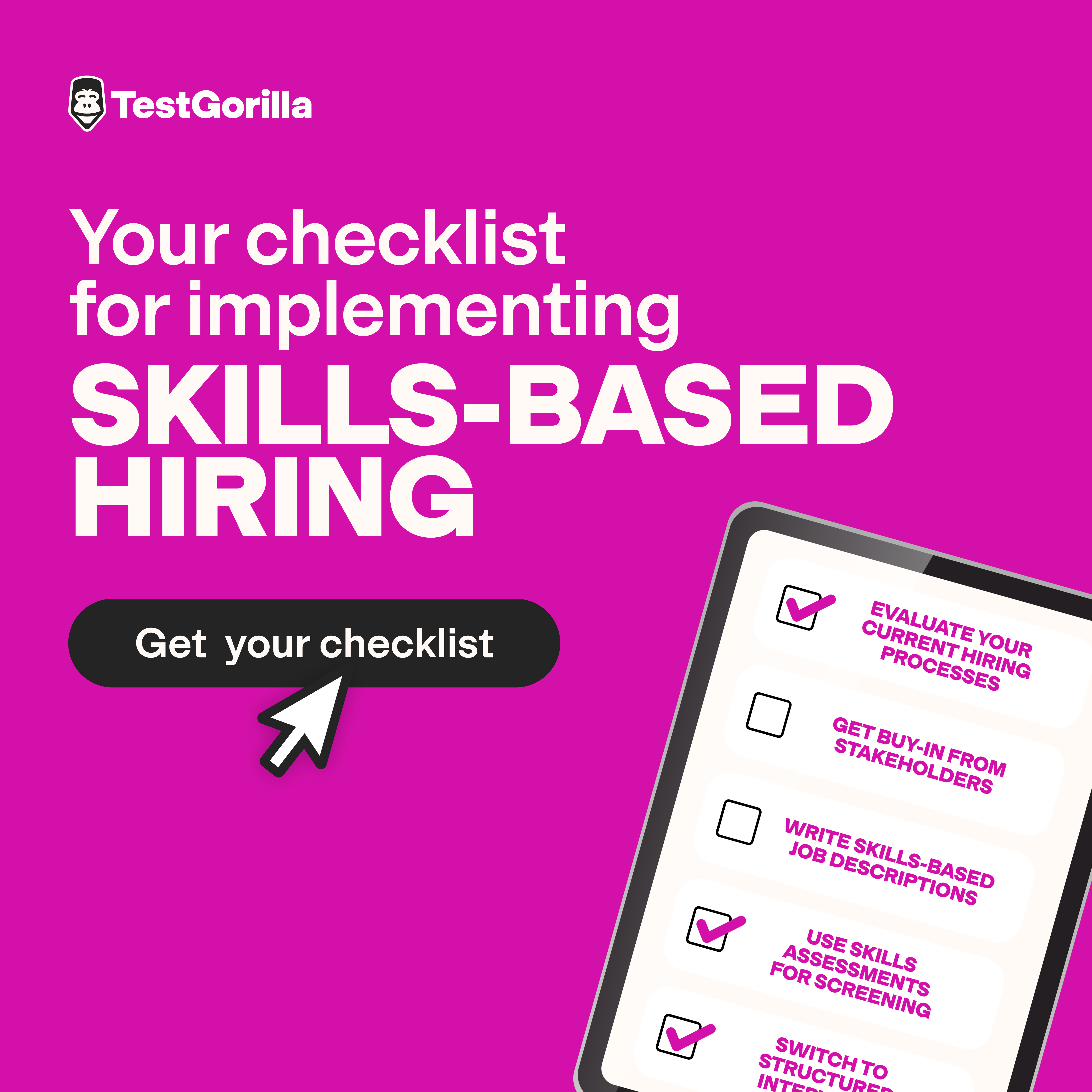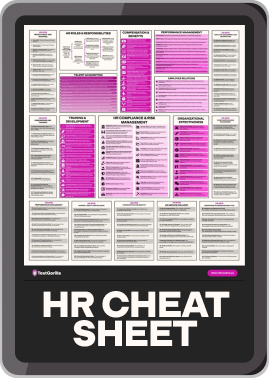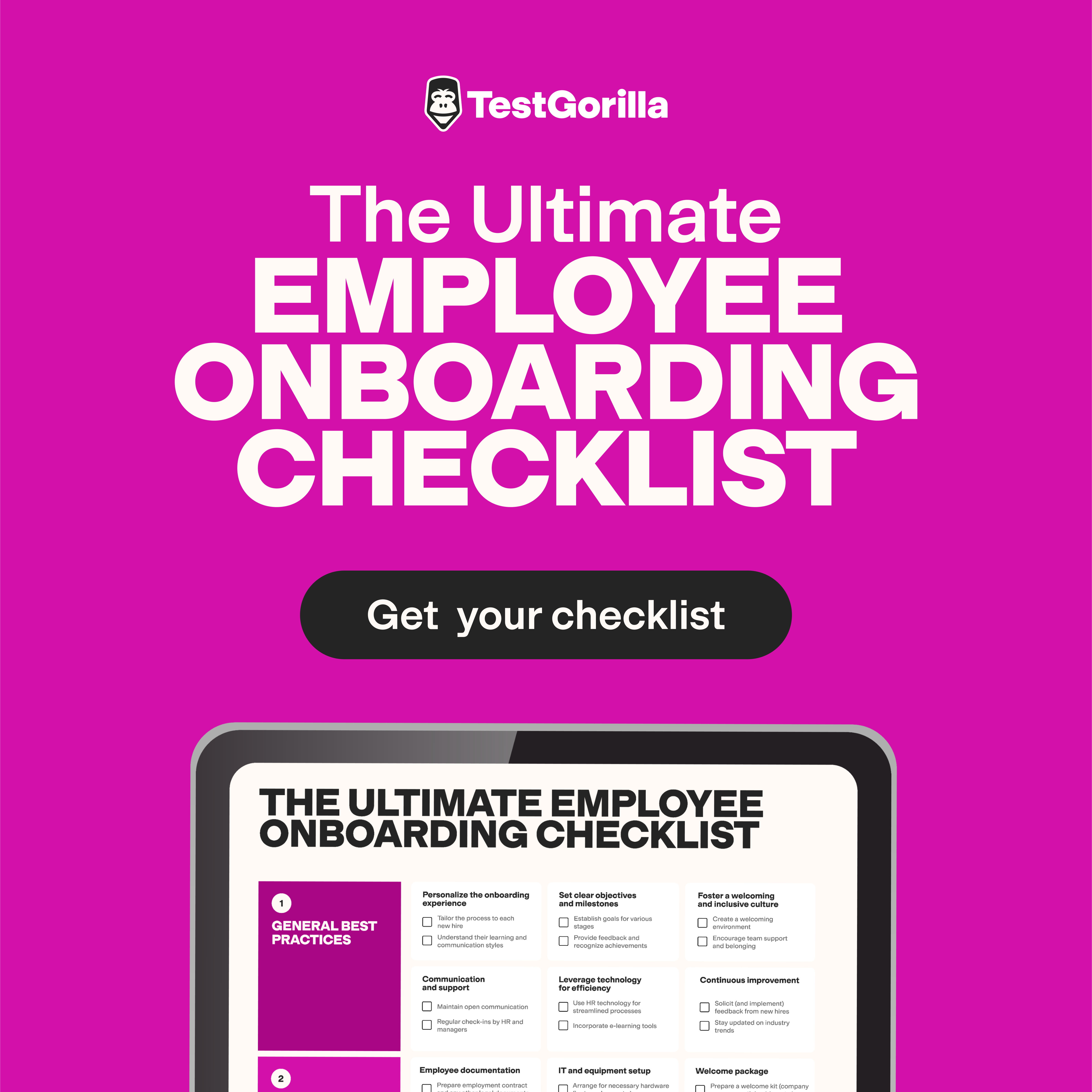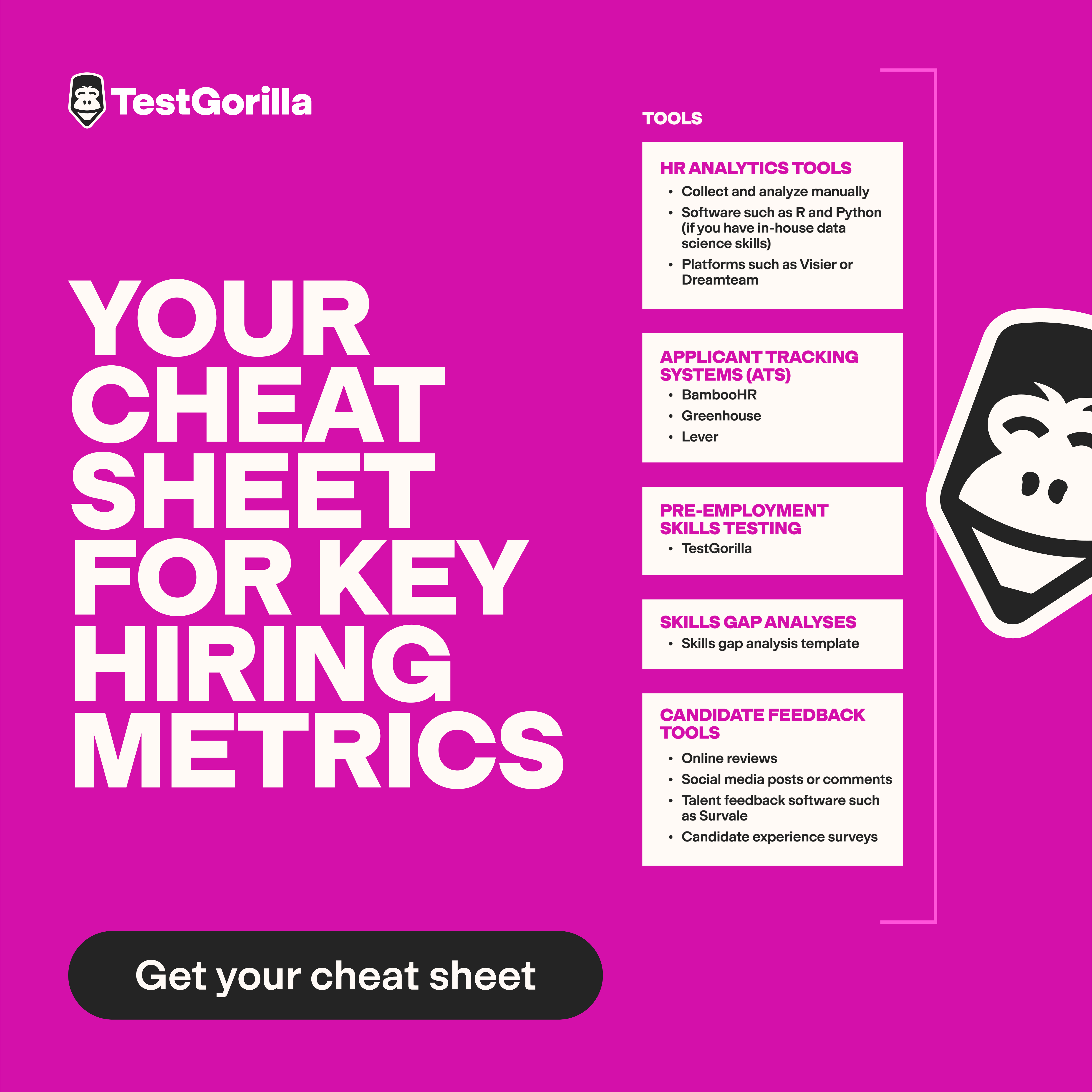If you’re looking to hire bilingual staff, you might appreciate knowing that about 22% of US citizens speak a language other than English at home. [1] That said, while your job candidates may be able to speak two languages casually or call themselves bilingual on their resumes, writing business emails, handling customer issues, or translating technical documents using both languages is a whole different ball game.
That’s where bilingual tests for employment come in. These tests can help you ensure the person you hire has the language skills your role demands.
Read on to learn all about using bilingual language tests in your hiring process. We’ll explore what they are, why they’re important, and what a good test should include.
Table of contents
What is a bilingual test for employment?
A bilingual test for employees measures how skilled a candidate is in a secondary language. (Some specialized assessments might assess skills in both languages.)
It isn’t designed to measure candidates’ conversational fluency but rather their level of proficiency – specifically, their ability to harness a language in a working environment. This is because people don’t typically need to be fully fluent to do their jobs well. Ben Whately, a linguistics expert, tells candidates, “You don't need to be fluent because actually, the conversations that you have in any given work context are relatively limited.”
Five core domains of language are usually assessed across these bilingual tests:
Reading, including comprehending content and the writer’s intent
Writing, including knowing grammar and spelling
Listening, including understanding colloquialisms and different accents
Speaking, including expressing ideas confidently
Translation, including conveying meaning with accuracy and speed
Discover our guide on fluency vs. proficiency.
Why you can’t skip testing bilingual skills
There are real-world consequences to skipping language proficiency testing.
For example, say you’re hiring a Spanish-speaking customer service rep who isn’t at the appropriate language skill level and can’t follow fast-paced conversations. This could lead to disappointed customers and potentially damage your brand’s reputation.
As another example, say you’re recruiting a legal secretary. Overestimate potential employees’ language skills or take resume claims at face value, and you could end up with someone who struggles to translate legal terminology accurately or miscommunicates key details. That’s not just inconvenient – it could cause delays, damage client trust, or even lead to costly legal mistakes. In some cases, it could be even more severe.
Consider the Tenerife Airport Disaster of 1977. While Dutch, English, and Spanish were all spoken on the ground, a tragic mix of miscommunication and assumption led to the disaster. One critical misunderstanding came down to the phrase “We are now at takeoff,” which the Dutch pilot believed meant they had clearance to go, when in fact, they didn’t.
The issue came down to the lack of nuance and clarity of communication under pressure.
Why you can’t just interview your bilingual candidates to assess their language skills
When you’re assessing someone’s ability to communicate in a secondary language, relying on interviews won’t work. Someone may sound confident in a real-time short chat, but their language skills could fall short in professional settings.
Using a bilingual test for employment supplements formal interviewing and ensures you’re getting the full picture of a candidate’s language abilities.
The best insights on HR and recruitment, delivered to your inbox.
Biweekly updates. No spam. Unsubscribe any time.
What a great bilingual test should actually involve
Look out for these key features when creating a bilingual test for employment.
1. Job-relevant tasks
Candidates should be able to speak and/or write professionally in the target language(s) and adapt their language to different workplace situations. For instance, can they adapt their language to handle a formal complaint or explain a complex idea to a customer?
Your test might measure a candidate’s ability to:
Read technical documents. This could include contracts, machine instructions, or internal policies – anything that requires precise understanding and attention to detail.
Draft emails and internal messages. These tasks are typically more involved than a quick Teams message. Tone, structure, and context can make or break a message, so it’s important for candidates to communicate appropriately in both languages.
Respond to complex client inquiries. Your employees are the face of your organization, and their language skills play a big role in how your brand is perceived. When a client reaches out with a complicated question, you need someone who can respond clearly and professionally in the correct language.
Handle on-the-fly phone calls. Most proficient speakers can handle a quick call in either language. But will they remain confident if the conversation is fast-paced or the language changes mid-call?
Translate key information without losing meaning. Getting lost in translation happens.But, when it comes to legal issues or safety instructions, there’s no room for error.
2. Context- and code-switching
The ability to shift context and tone is a huge part of using a language professionally.
Your test should look for a candidate’s ability to:
Switch between a formal and informal tone. Can they swap their tone seamlessly when the conversation demands?
Switch between internal and client communications. Can candidates adjust their language when speaking to members of your organization versus speaking on behalf of your organization?
Understand culturally appropriate expressions. Different languages use different phrases, levels of formality, and even body languages depending on the situation. What’s acceptable in one culture might come across as rude or awkward in another. Are your bilingual employees culturally aware?
3. Speed and clarity under pressure
Candidates should be able to communicate clearly when the pressure is on.
Your test should assess how candidates respond to:
Simulated deadlines or customer calls. Can they respond quickly without compromising clarity or accuracy? Can they properly navigate clarity and tone even when a deadline is looming or a customer is waiting?
Reading comprehension. When they don’t have the luxury of reading things slowly and carefully, can they scan a complex document quickly and accurately when they need key information?
Note: Simulated pressure can worsen certain challenges associated with neurodiversity. For example, candidates with dyslexia or ADHD might find timed tasks or high-stress scenarios particularly difficult. If a candidate makes you aware that they have a disability, make special accommodations when using skills tests.
What to test for specific bilingual roles
One-size-fits-all language tests don’t work. Different roles require different language skills, and that should be reflected in the test.
Here are some examples of what to test for certain roles:
A sales position. Focus on speaking (verbal fluency) and listening abilities (including empathy).
An admin job. Focus on reading, writing, and translating – including whether candidates can switch between languages comfortably.
A healthcare assistant. Assess their writing skills and ability to communicate clearly in real-time interactions (listening and speaking).
A social media manager. Look at their understanding of cultural nuance and their writing skills.
A teaching assistant in a bilingual school. Assess their ability to speak and listen, plus see how well they can adapt their communication depending on who they’re interacting with.
How TestGorilla makes bilingual testing easier and more reliable
Looking for a robust, customizable, and data-driven bilingual test for employment? TestGorilla’s language tests are available in 16 languages and aligned with the Common European Framework of Reference for Languages (CEFR) – the gold standard for measuring foreign language proficiency across the globe. It breaks language ability down into six levels, from A1 for beginners to C2 for near-native proficiency, so you can get a clear, consistent understanding of someone’s ability.
What’s more, you can combine any language test with up to four other role-based tests and add custom questions unique to your role. That means your assessment can truly reflect the day-to-day of the job.
Our language proficiency tests assess four core domains, including speaking, listening, writing, and reading. There are also some translation tasks available, depending on the language and level. You can add custom translation-based or fluency-based questions, too – including video questions.
Candidates are scored objectively against the CEFR framework, so you can see exactly where their strengths lie and how well they match the level required for the role.
You can use tests at any stage of the hiring process for bilingual positions, but when it comes to language skills, you should assess candidates early – and filter out unqualified candidates right away. This saves you time, saves candidates time, and ultimately saves you money. It also gives you a clearer idea of what skills and experience to dig into during your interviews.
Find your next bilingual hire with TestGorilla
TestGorilla’s CEFR-aligned language tests go beyond surface-level fluency and resume claims to measure how well candidates can perform professionally in two languages.
Check out our language proficiency tests today. Alternatively, register for a TestGorilla account and get the ball rolling on your bilingual recruitment.
Sources
The United States Census Bureau, “Why We Ask Questions About...Language Spoken at Home.” https://www.census.gov/acs/www/about/why-we-ask-each-question/language/
You've scrolled this far
Why not try TestGorilla for free, and see what happens when you put skills first.






